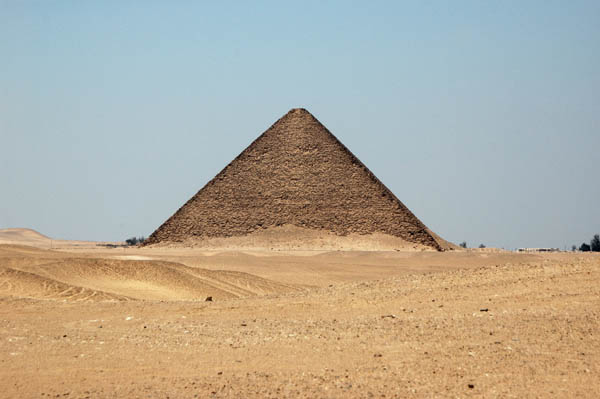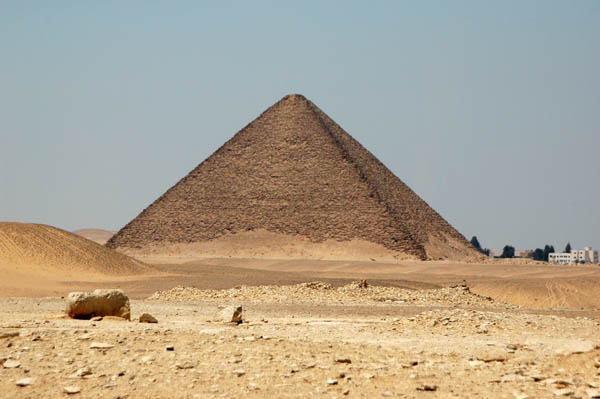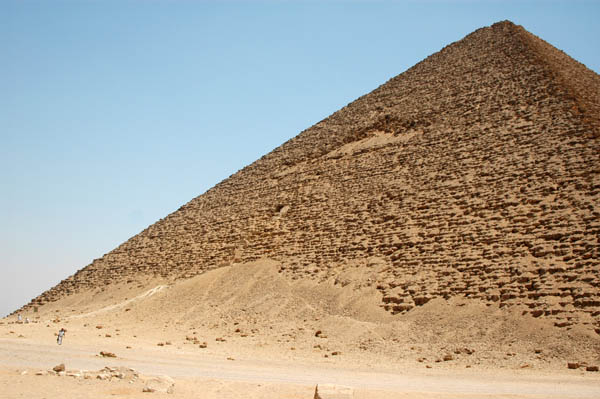
- Dahshur, North or Red Pyramid
- The Dahshur North or Red (local limestone is tinged red by iron oxide) pyramid was the last of Sneferu’s buildings. It is simple and elegant with a 43° slope - it is only shorter than Khufu’s by 15m – with a centralized burial chamber. Some features are not present, such as a causeway, but it serves as a perfect transition from Dahshur to Giza. Stadelmann used worker’s graffiti inside casing stones to estimate a build-duration of approximately 20 years.
In around his 30th year on the
throne, Sneferu abandoned the Bent Pyramid as his burial place, although, as at Meidum, he later completed it. Instead,
he began work on the North, or Red, Pyramid which was built at the gentler slope of 43" 22' from the beginning. In many
ways this was more elegant than the Bent Pyramid, where the builders obviously struggled and experimented with various
solutions to the structural problems they were faced with. The North Pyramid shows none of this - it is a neatly planned
and executed construction, built with an efficient use of materials.
Rainer Stadelmann has been
working at North Dahshur for over a decade. In the course of his excavations of the debris at the base of the pyramid he
found hundreds of pieces of the fine limestone casing. Many of these have graffiti inscribed on their rear faces by the
work gangs. One from a corner bears the hieratic (shorthand hieroglyphic) inscription mentioning `bringing to earth year
15'. This refers to counting year 15, which, if biennial, is equivalent to the 30th year of Sneferu's reign. Some 30
courses higher Stadelmann was able to place a casing stone dated only four years later - this gives us a very clear
picture of the length of time it took to build such pyramids.
Remarkably, Stadelmann also
found pieces of the pyramid's capstone. This was a simple culmination of the structure - a block with no carving or
inscription and made of good quality limestone rather than any costlier material. Its pieces were found near the base,
rejected by those who were stripping the outer mantle of its fine limestone.
By contrast with the
pyramid-building kings of Giza, who seem to have been entirely ignored by Egyptians of the Middle Kingdom, the cult of
Sneferu took root and prospered in succeeding periods. It was at the valley temple of the Bent Pyramid that this cult
was focused. Why this was so is an interesting question. Perhaps it was because here at the Bent Pyramid we have a fully
completed complex. Although Sneferu was probably not buried here, his name was completed on various stelae and so this
was where his life continued. Ironically, this was also the pyramid complex that ran into severe structural problems and
tested the builders' nerves to the greatest extent.
Source: The Complete Pyramids; Mark Lehner; Thames and Hudson; 2000 (possibly the best all-round book available on Pyramid)
Dashur Pyramid Complex.

